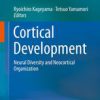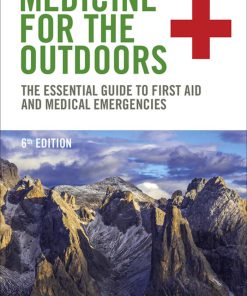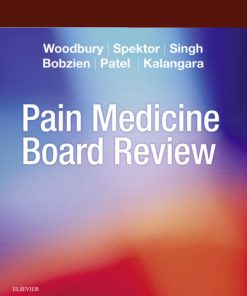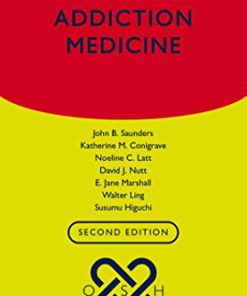Auerbach’s Wilderness Medicine 7th edition by Paul Auerbach, Tracy Cushing, Stuart Harris ISBN 0323359426 9780323359429
$50.00 Original price was: $50.00.$25.00Current price is: $25.00.
Auerbach’s Wilderness Medicine 7th edition by Paul S. Auerbach, Tracy A Cushing, N. Stuart Harris – Ebook PDF Instant Download/Delivery: 0323359426, 978-0323359429
Full download Auerbach’s Wilderness Medicine 7th Edition after payment

Product details:
ISBN 10: 0323359426
ISBN 13: 978-0323359429
Author: Paul S. Auerbach, Tracy A Cushing, N. Stuart Harris
Now in its 7th edition, Auerbach’s Wilderness Medicine continues to help you quickly and decisively manage medical emergencies encountered in any wilderness or other austere setting! World-renowned authority Dr. Paul Auerbach and 2 new associate editors have assembled a team of experts to offer proven, practical, visual guidance for effectively diagnosing and treating the full range of issues that can occur in situations where time and resources are scarce. This indispensable resource equips physicians, nurses, advanced practice providers, first responders, and rescuers with the essential knowledge and skills to effectively address and prevent injuries and illnesses – no matter where they happen!
- Brand-new 2-volume format ensures all content is available in print and online to provide you easy access.
- Face any medical challenge in the wilderness with expert guidance from hundreds of outstanding world experts edited by Dr. Auerbach and 2 new associate editors, Drs.Tracy Cushing and N. Stuart Harris
- New and expanded chapters with hundreds of new photos and illustrative drawings help increase your visual understanding of the material
- Acquire the knowledge and skills you need with revised chapters providing expanded discussions of high-altitude medicine, improvisation, technical rescue, telemedicine, ultrasound, and wilderness medicine education
- Ten new chapters cover Acute High-Altitude Medicine and Pathophysiology; High Altitude and Pre-Existing Medical Conditions; Cycles, Snowmobiles, and other Wilderness Conveyances; Medical Wilderness Adventure Races (MedWAR); Canyoneering and Canyon Medicine; Evidence-Based Wilderness Medicine; National Park Service Medicine; Genomics and Personalized Wilderness Medicine; Forestry; and Earth Sciences
- 30+ Expert Consult online videos cover survival tips, procedural demonstrations, and detailed explanations of diseases and incidents
- Expert Consult eBook version included with purchase. This enhanced eBook experience allows you to search all of the text, figures, images, videos, and references from the book on a variety of devices
Auerbach’s Wilderness Medicine 7th Table of contents:
Part 1: Mountain Medicine
Chapter 1: High-Altitude Physiology
- Definitions
- The Environment of High Altitude
- Acclimatization to High Altitude
- References
Chapter 2: High-Altitude Medicine and Pathophysiology
- High-Altitude Syndromes
- Other Medical Concerns at High Altitude
- References
Chapter 3: High Altitude and Preexisting Medical Conditions
- Framework for Evaluating Travelers with Underlying Conditions
- Specific Medical Conditions at High Altitude
- Medication Considerations in High-Altitude Travelers
- References
Chapter 4: Avalanches
- Properties of Snow
- Avalanche Dynamics
- Identifying Avalanche Terrain
- Factors Contributing to Avalanche Formation
- Safe Travel in Avalanche Terrain
- Avalanche Rescue
- The Avalanche Victim
- Victim Physiology and Medical Treatment After Rescue
- Summary
- Acknowledgments
- References
Chapter 5: Lightning-Related Injuries and Safety
- Historical Overview
- Myths and Misconceptions about Modern Lightning
- Incidence of Injury
- Early Scientific Studies and the Invention of the Lightning Rod
- Physics of Lightning Stroke
- Mechanisms and Pathophysiology of Lightning Injury
- Types of Injuries and Recognition
- Acute Treatment of Lightning Injuries
- Forensic Investigation
- Lightning Injury Prevention
- Controversies and Research
- Lightning Detection and Data Applications
- References
Part 2: Cold and Heat
Chapter 6: Thermoregulation
- Basics of Core Temperature and Heat Exchange
- Thermoregulatory System and Network
- Physical and Behavioral Adjustments to Temperature
- Effects of Altered Core Temperature
- Evaporative Cooling and Metabolic Adjustments
- References
Chapter 7: Accidental Hypothermia
- Epidemiology and Pathophysiology
- Predisposing Factors
- Clinical Presentation and Laboratory Evaluation
- Treatment and Rewarming Options
- Cardiopulmonary Resuscitation (CPR) and Cerebral Resuscitation
- Pharmacology and Complications
- Forensic Pathology
- Long-Term Outcomes
- References
Chapter 8: Immersion into Cold Water
- Physiologic Responses to Cold-Water Immersion
- Factors Affecting Core Cooling
- Survival and Rescue in Cold Water
- Medical Management
- References
Chapter 9: Frostbite
- History, Epidemiology, and Physiology
- Pathophysiology and Classification
- Contributing Factors
- Clinical Presentation and Field Treatment
- Hospital Treatment and Long-Term Effects
- Prevention and Future Treatments
- References
Chapter 10: Nonfreezing Cold-Induced Injuries
- Types of Injuries (e.g., Trench Foot, Raynaud’s Phenomenon)
- Epidemiology and Pathophysiology
- Risk Factors and Clinical Presentation
- Treatment, Prevention, and Severe Injuries
- References
Chapter 11: Polar Medicine
- Distinctions between Arctic and Antarctic Medicine
- History of Human Habitation in Polar Regions
- Medical Problems in the Arctic and Antarctic
- Overview and Future Developments
- Acknowledgments
- References
Chapter 12: Pathophysiology of Heat-Related Illnesses
- Heat Stress and Thermoregulation
- Heatstroke and Risk Factors
- Pathophysiology and Treatment
- Heatstroke Prevention and Genetic Polymorphisms
- References
Chapter 13: Clinical Management of Heat-Related Illnesses
- Exertional Heat Illness
- Adaptation to Environmental Conditions
- Acknowledgments
- References
Part 3: Burns, Fire, and Radiation
Chapter 14: Wildland Fires
- Fire Management and Technology
- Wildland-Urban Interface
- Fire Behavior and Injuries
- Principles of Fire Survival
- Wildland Fires and Human Behavior
- Concluding Remarks
- Acknowledgments
- References
Chapter 15: Emergency Care of the Burned Patient
- Epidemiology and Physiology of Burns
- Types of Burns and Clinical Presentation
- Treatment, Inhalation Injuries, and Other Considerations
- References
Chapter 16: Exposure to Radiation from the Sun
- Effects of Ultraviolet Radiation on Skin
- Sunburn, Tanning, and Phototrauma
- Sun and Skin Cancer
- Photoprotection and Sensitivity Disorders
- Tips for Wilderness Enthusiasts
- References
Chapter 17: Volcanic Eruptions, Hazards, and Mitigation
- Global Distribution of Volcanoes
- Types and Hazards of Volcanoes
- Risk Reduction from Volcanic Hazards
- References
Part 4: Trauma
Chapter 18: Wilderness Trauma and Surgical Emergencies
- Overview of Wilderness Trauma
- Primary and Secondary Surveys
- Wilderness Care Adaptations
- Surgical Emergencies (Head, Thorax, Abdomen, Extremities)
- Anal Fissure, Urologic, and Soft Tissue Infections
- Anesthesia and Sterility in Wilderness
- References
Chapter 19: Emergency Airway Management
- Anatomy and Decision-Making for Intubation
- Basic and Advanced Airway Management
- Alternative Strategies for Difficult Airways
- Surgical Airway Techniques
- Wilderness Airway Equipment
- References
Chapter 20: Management of Facial Injuries
- Examination, Diagnosis, and Treatment of Facial Injuries
- Prevention and References
Chapter 21: Wound Management
- Types and Clinical Presentation of Wounds
- Treatment and Complications
- Wound Care Kit
- References
Chapter 22: Wilderness Orthopedics
- Musculoskeletal Injuries and Examination
- Life-Threatening Injuries
- Extremity, Hip, and Leg Injuries
- Spinal Disorders, Corticosteroid Injections
- New Technologies for Casting and Bracing
- References
Chapter 23: Splints and Slings
- Techniques for Spine and Extremity Immobilization
- References
Chapter 24: Taping and Bandaging
- Techniques for Taping and Bandaging
- References
Chapter 25: Foot Problems and Care
- Blisters and Common Foot Injuries
- References
Chapter 26: Hunting and Fishing Injuries
- Types of Hunting and Fishing Injuries
- References
Chapter 27: Tactical Medicine
- History and Principles of Tactical Medicine
- Military vs Civilian Care
- Tactical Mission and Gear
- Education and Training Programs
- References
Chapter 28: Combat and Casualty Care
- Battlefield vs Civilian Medicine
- Types of Injuries and Treatment (Burns, Blast, etc.)
- Pain Management and Triage
- Telemedicine and Mass Casualties
- References
Chapter 29: Injury Prevention
- Wilderness Injury Prevention Principles
- Factors Affecting Injury Prevention
- Unique Risks of Wilderness Activities
- References
Part 5: Animals and Zoonoses
Chapter 30: Bites and Injuries Inflicted by Wild and Domestic Animals
- Epidemiology and Circumstances of Animal Bites
- Prevention and Evaluation of Injuries
- Wild and Domestic Animal Attacks
- Medicolegal Considerations
- References
Chapter 31: Rabies
-
Current Status: An overview of the current global situation regarding rabies, emphasizing its ongoing impact as a public health issue, especially in certain regions of the world.
-
The Rabies Virus: Description of the rabies virus, including its biology, transmission, and how it infects the host. Discussion of the viral replication process and its effects on the nervous system.
-
Rabies in the United States: A focus on the status of rabies in the United States, including statistics, trends, and preventative measures that have reduced cases in recent years. It may also cover rabies in domestic animals like dogs, cats, and wildlife.
Chapter 32: Bear Behavior and Attacks
- North American Bears: Overview of bear species found in North America.
- Prevention and Risk Reduction: Strategies to reduce the risk of bear encounters and attacks.
- Bear-Induced Injuries: Types of injuries caused by bear attacks and their medical management.
- Acknowledgment
- References
Chapter 33: Alligator and Crocodile Attacks
- Characteristics, Lifestyle, and Habits: Behavior and habitat of alligators and crocodiles.
- Feeding and Predation Habits: Feeding behaviors and the predation methods of these reptiles.
- Overview of Attacks: Incidents of alligator and crocodile attacks on humans.
- Treatment of Crocodilian Bites: Medical response to bites from crocodiles and alligators.
- Prevention of Crocodilian Attacks: Measures to prevent encounters and attacks from these animals.
- If an Attack Occurs: Steps to take if attacked by an alligator or crocodile.
- References
Chapter 34: Wilderness-Acquired Zoonoses
- Zoonotic Diseases: List of diseases that can be contracted in wilderness areas from animals.
- Anthrax
- Bartonella Infections
- Brucellosis
- Glanders
- Leptospirosis
- Melioidosis
- Rat-Bite Fever
- Plague
- Tularemia
- Avian/Swine Influenza
- Cowpox and Monkeypox Infections
- Hantavirus Pulmonary (Cardiopulmonary) Syndrome
- Hendra Virus
- Nipah Virus
- Cysticercosis (Taeniasis)
- Echinococcosis
- Trichinellosis
- Variant Creutzfeldt-Jakob Disease
- Acknowledgment
- References
Chapter 35: Bites by Venomous Reptiles in Canada, the United States, and Mexico
- Venomous Snakes: Information on venomous snakes found in North America.
- Venomous Lizards: Overview of venomous lizards in the region.
- Considerations before Going into the Wilderness: Precautions to take before venturing into wilderness areas with venomous reptiles.
- References
Chapter 36: Bites by Venomous and Nonvenomous Reptiles Worldwide
- Dangerous Reptiles: Identification and characteristics of dangerous reptiles around the world.
- Venomous Snakes: Detailed information about venomous snake species.
- Identification of Venomous Snakes: How to identify venomous snakes and avoid them.
- Venom Composition: Explanation of snake venom and its components.
- Epidemiology of Snakebite: Global patterns and trends in snakebites.
- Distribution of Venomous Snakes: Geographic regions where venomous snakes are found.
- Snakebite Mortality and Morbidity: Rates of fatalities and complications from snakebites.
- Clinical Features of Envenoming and Pathophysiologic Mechanisms: Symptoms of snakebite envenomation and how venom affects the body.
- Clinical Pattern of Envenoming by Different Taxa of Venomous Snakes: Variations in the effects of venom based on snake species.
- Course and Sequelae of Envenoming: Long-term effects and recovery from snake envenoming.
- Laboratory Investigations: Diagnostic tests for snakebites.
- Management of Snakebite: Treatment approaches for venomous snakebites.
- Prevention of Snakebite: How to avoid snakebites in the wilderness.
- Venomous Lizards: Information on venomous lizards and their bites.
- Dangerous Large Reptiles: Overview of larger reptiles like crocodiles and their potential threats.
- References
Chapter 37: Ranch and Rodeo Medicine
- Ranch Medicine: Medical care and challenges on a ranch, including common injuries and conditions.
- Rodeo Medicine: Overview of medical care specific to rodeo activities, focusing on injuries and emergency management.
- References
Chapter 38: Emergency Veterinary Medicine
- Dogs: Emergency veterinary care for dogs, including common injuries and treatments.
- Large Animals: Veterinary emergency care for large animals like horses, cattle, and livestock.
- References
People also search for Auerbach’s Wilderness Medicine 7th:
auerbach’s wilderness medicine
auerbach’s wilderness medicine 8th edition
auerbach wilderness medicine 7th edition pdf
paul auerbach wilderness medicine
7 auerbach lane lawrence ny
Tags:
Paul Auerbach, Tracy Cushing,Stuart Harris,Auerbach’s,Wilderness,Medicine 7th
You may also like…
Uncategorized
Business & Economics - Mathematical Economics
The economics of tax policy 1st Edition by Alan Auerbach, Kent Smetters 0190619724 9780190619725
Politics & Philosophy
Medicine - Natural Medicine
Business & Economics












